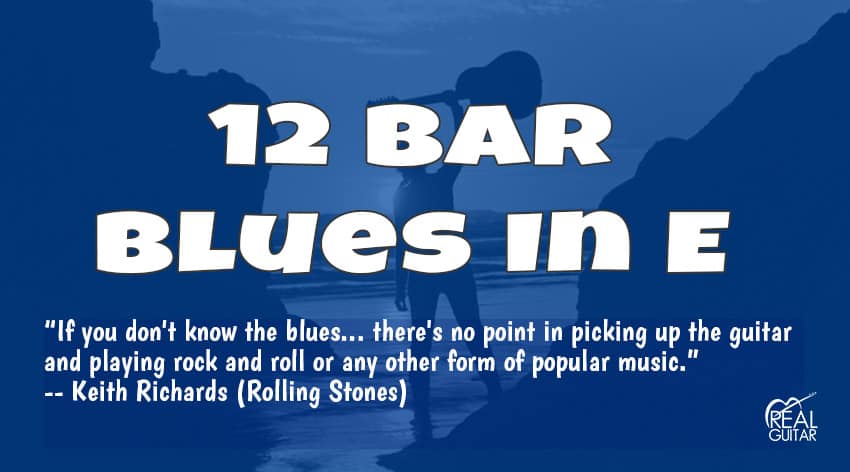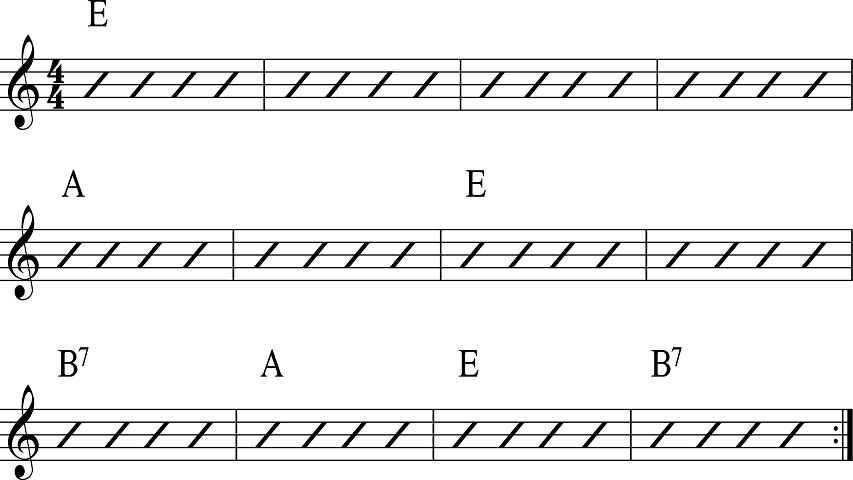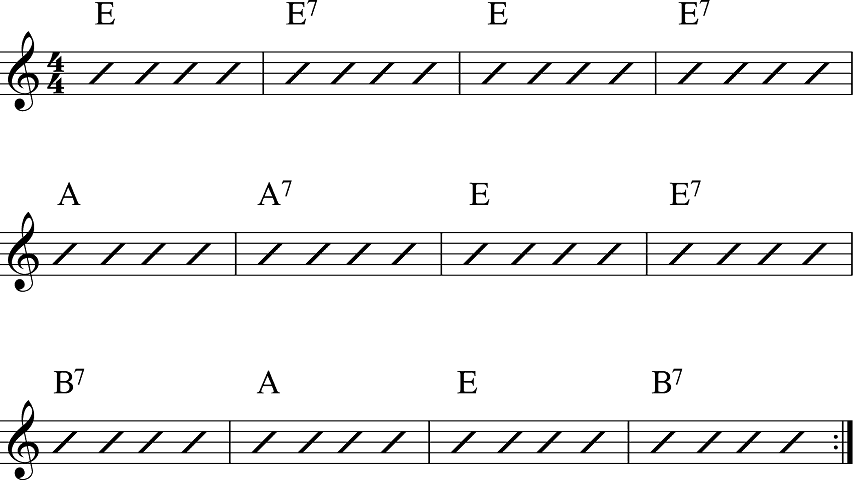
Easy Guitar Tutorial - 12 Bar Blues in E
The 12 bar blues is a very common pattern and an important one for guitar players to learn.
It is not only the basic structure for blues, but is also used extensively in rock, country, jazz and pop music.
The 12 bar blues in the key of E is the most popular for guitar players because the key itself well to improvisation (the key of A being right up there).
You'll find that the 12 bar blues pattern is used for the foundation of many classic tunes in many styles including:
- Hound Dog (Elvis Presley)
- Red House (Jimi Hendrix)
- Summer Days (Bob Dylan)
- Stormy Monday (T-Bone Walker)
- Johnny B. Goode (Chuck Berry)
- Mustang Sally (Wilson Pickett)
- Rock and Roll ( Led Zeppelin)
- I Got You/I Feel Good (James Brown)
- Crossroads (Cream/Clapton)
… just to name a few.
In short understanding the 12 bar blues progression is a great first step playing blues, but also can help you to learn songs in many styles quickly once you recognize the pattern.
With that in mind this go over what makes up the basic 12 bar blues structure and a step-by-step approach to learning it.
Basic 12 Bar Blues In E
There are many variations of the 12 bar blues pattern, but I've found it's best to understand the simplest version of the pattern first.
In its most basic form the 12 bar blues uses just three chords.
If you understand the concept of chord families we could number the chords as the one chord, the four chord and the five chord (usually written I, IV and V).
Since we’re doing it in the key of E the chords will be an the E chord, an A chord and a B7 chord.
The structure will look like this:

- 4 measures of E
- 2 measures of A
- 2 measures of E
- 1 measure of B7
- 1 measure of A
- 1 measure of E
- 1 measure of B7
Go ahead, add them up… yup, that makes 12 measures or bars. (hence the name… 12 bar blues).
If you're just learning these chords it's helpful to start off by practicing the basic chord fingering. Then practice the chords using this basic 12 blues in E pattern.
This will help you to internalize the pattern as well as give you practice changing chords.
However you’re likely get bored before long, especially staying on that first E chord for four full measures, let’s introduce an extended version of the 12 bar blues in E.
Extended Version Of The 12 Bar Blues
Now we can add a few more chords to make this a little more interesting. Instead of playing a full four bars of E in the beginning we’re going to alternate with the E7 chord.
Please understand this is just one possible variation… but a useful one.
So now you'll play one measure (4 beats) of E, then one measure of E7, one measure of the E, and then another measure of E7 (that’s 4 measures).
We’ll also alternate between A and A7 when you have two measures. You’ll play one measure of A, then one measure of A7 (you’re up to measure #6 now).
Now one measure of E, one measure of E7 (up to measure #8).
End with one measure each of B7, A, E and B7 (now that’s 12 measures).
Here's what that will look like as a chord chart:

How to Practice the 12 Bar Blues
1. Start off by practicing the fingering for the basic chords. Practice the E, A and B7 chord fingering.
2. Slowly play the 12 bar blues in E pattern using these chords to get used to changing chords. Play keeping your own tempo, then try keeping time with a metronome.
3. Now practice the fingering of E7 and A7.
4. Add these to the pattern. Start slow. You'll find changing chords at first a little more strenuous because you’re changing more often.
5. Now if you did the previous steps you’re ready to play along with a backing track. Keep at it until you can keep up with the chord changes along with the track.
Go ahead and download the worksheet for this lesson which includes the chord diagrams and the two chord charts so you can follow along.

Thank you Thomas, its really nice to see myself being able to play along with the music!
Hey man I like the 12 bar blues turnaround, any chance you could email me the actual TAB so I won’t have to write it down myself. Many thanks
Great lesson, Thomas, could you e-mail the tab, please?
Thank you for taking the time to help people with learning